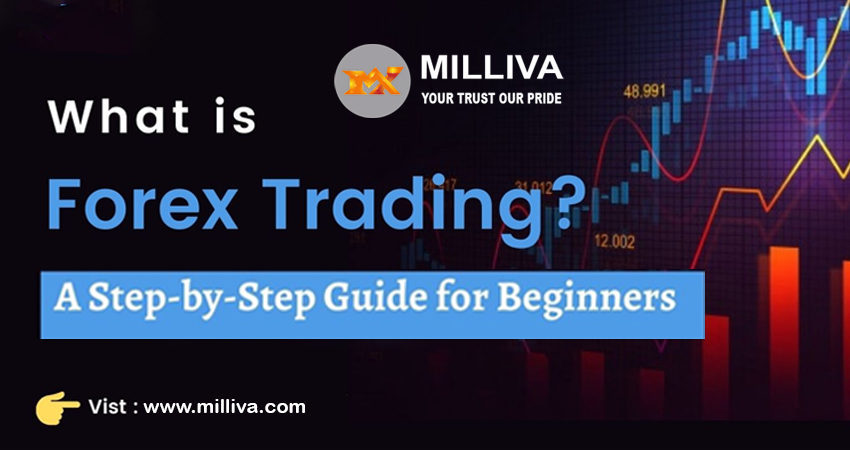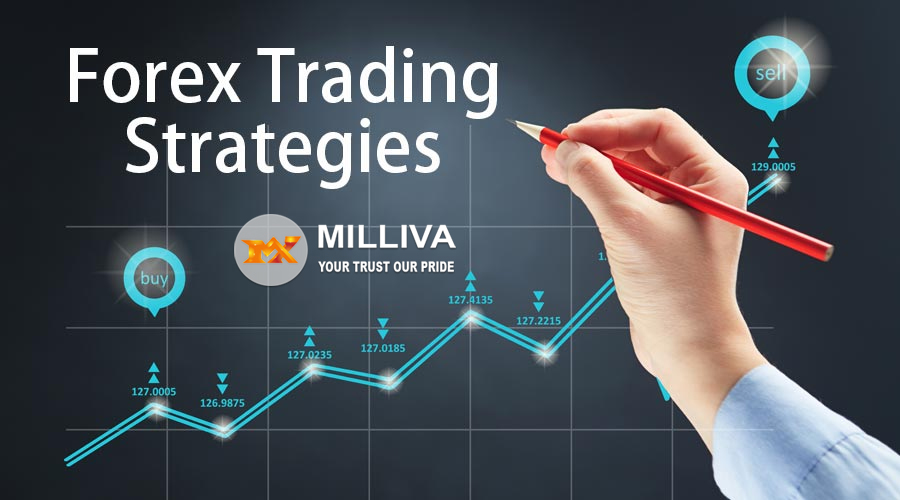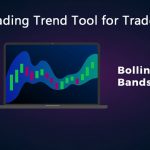Step by Step Guide for Forex Trading Beginners

![]()
What Does Exchange Mean?
Forex Trading : An exchange is an act of giving and receiving that is in exchange for the price you give you will receive the thing.
Also, an exchange is a platform where you may trade products like stocks, commodities, derivatives, and other financial products. An exchange’s primary goal is to promote transparent and efficient trading as well as the efficient communication of pricing information for all products traded on the exchange.
Companies, governments, and other organizations use exchanges to sell securities to the general public.
What is a Foreign Exchange or Forex Mean?
Foreign exchange, or forex, can be defined as a platform for buyers and sellers who exchange currencies at a pre-determined price. It is the process by which people, businesses, and central banks change one currency into another.
With billions of dollars changing hands every day, the FX market is the world’s largest and most liquid market. There is no one point of contact. The FX market, on the other hand, is a global electronic network of banks, brokers, institutions, and individual traders (mostly trading through brokers or banks).
How Does Forex Trading Work?
Buying and selling other sorts of securities, such as stocks, is similar to forex trading. The most significant distinction is that forex trading is done in pairs, such as EUR/USD (euro/US dollar) or JPY/GBP (Japanese yen/British pound).
You sell one currency and purchase another when you conduct a forex deal. If the currency you purchase rises versus the currency you sell, you profit.
What is Currency Pair?
Currency pair is two currencies that are quoted against each other. This means to buy one currency you need to exchange another currency that is been quoted to it. Currency pair is simply two combined currencies of two countries for the foreign exchange market.
These two currencies have their own currency exchange rate and position size. These are base currency and quote currency. In simple words, the currencies paired represents which currency you want to buy the base currency and what is the cost of that currency in the native coins the quote currency.
All trading in forex trading takes place in currency pairs. For eg, Lets imagine the euro and the US dollar are trading at a 1.40 to 1 exchange rate. You would pay $1,400 in US dollars for 1,000 euros. If the exchange rate drops to 1.50 to 1, you may sell those euros for $1,500 and make a $100 profit.
How Do Currency Pairs Work?
As previously stated, a currency pair consists of two separate country currencies used as the base and quote currencies. The first currency is the base currency, while the second currency is the quote currency. When you buy base currency, you pay the price in quotation currency value for that base currency.
The value of foreign money fluctuates, causing the exchange rate to fluctuate. One currency’s value will always be higher than another’s.
Base Currency:
The base currency is the 1st currency of the pair that you buy.
Quote Currency:
The quote currency is the 2nd currency of the pair that you pay in amount to buy the base coin.
For example in EUR/USD, EUR is the base currency and USD is the quote currency. To buy EUR coin you have to pay the amount in USD. That is to buy 1 EUR coin you have to pay $1.35 USD currency.
What are the Types of Currency Pairs?
There are many different types of currencies. They are
Major Currency Pair:
It is combination of two coins that is most traders.
EUR/USD- US DOLLAR VS EURO
GBP/USD-BRITISH POUND VS US DOLLAR
USD/CAD- US DOLLAR VS CANADIAN DOLLAR
USD/JYP- US DOLLAR VS JAPANESE YEN
USD/CHF- US DOLLAR VS SWISS FRANC
AUD/USD- AUSTRALIAN DOLLAR VS US DOLLAR
NZD/USD-NEW ZELAND CURRENCY VS US DOLLAR
Cross Currency Pair:
These are currency pairs without USD
Euro Cross:
EUR/AUD- EURO VS AUSTRALIAN DOLLAR
EUR/NZD- EURO VS NEWZELAND CURRENCY
EUR/GBP- EURO VS BRITISH POUND
Pound Cross:
GBP/JPY- BRITISH POUND VS JAPANESE YEN
GBP/NZD- BRITISH POUND VS NEWZELAND CURRENCY
GBP/AUD- BRITISH POUND VS AUSTRALIAN DOLLAR
Yen Cross:
GBP/JPY- BRITISH POUND VS JAPANESE YEN
NZD/JPY- AUSTRALIAN DOLLAR VS JAPANESE YEN
AUD/JPY- AUSTRALIAN DOLLAR VS JAPANESE YEN
Exotic Currency Pair:
The combination of currency of major countries and developing country
USD/MXN- USDOLLAR VS MEXICAN PESO
EUR/TRY- EURO VS TURKISH LIRA
INR/GBP- INDIAN RUPEE VS BRITISH POUND
What Determines Profit and Loss?
When you buy or sell a currency, The Value of that particular currencies rate determines your profit or loss, that is when you buy a coin at its low price and sell it for a higher price there your trade is a profit, and when you buy a coin at its high price and sell it to lower price there your trade is a loss. The rate of the currency pair varies by many factors.
The Basics of Forex Trading:
Before entering into trading you must know the basic steps to start trading
Educate yourself about trading
Find the right broker
Create a trading account with that broker
Educate Yourself About Trading:
For a new trader, education is crucial. You can always improve and learn as you progress through your trading career. To understand how to trade the markets, read books and articles, try techniques on demo accounts, and seek out whatever knowledge or assistance you can.
Even experienced traders continue to educate themselves since information, not just abilities is what will lead to possibly positive results. To have a successful trading experience, learn the words, methods, and how to interpret the charts.
Find the Right Broker:
One of the most important aspects of forex trading is the Forex Broker. Check reviews, test out their sample account, see whether the trading program matches your expectations, and see if the broker offers the extra tools you may need to achieve your trading goals.
Create a Trading Account:
To begin trading in foreign currencies, you must first create a trading account. There are two types of trading accounts offered by the broker are demo account and the live account.
Demo account: it is considered as practicing account, where you don’t deposit any real money rather you will be giving fake currency. You can implement your trading strategies and ideologies in this account and experiment with your trading skills without losing your money.
Live account: A live account involves real money so you need to make a deposit and start trading in real-time. FYI switch to a live account only when you are totally strong with the trading concept and you are confident about trading.

Trading Account Basics:
To make the account operational, complete the KYC process.
To begin trading, the broker will ask you to deposit the needed margin.
Your broker should be able to provide you with the necessary login credentials.
Terms you Must be Aware of:
For merchants operating in a certain specialization, each market has its own vocabulary of jargon. When it comes to the foreign exchange market, you’ll frequently encounter the following terms:
1. A Brokerage Firm or a Broker:
An intermediary is the same as a broker. Brokers in the forex market are companies or individuals who function as a portal to trading platforms where traders may buy and sell foreign currency.
2. The Spread Between the Bid and Ask Price:
In a nutshell, the bid-ask spread is the fee that brokers charge you for acting as your broker on a foreign exchange platform. The bid price is the highest price at which a buyer is ready to pay for a currency, whereas the ask price is the lowest price at which a broker is willing to sell a currency. The spread is the difference between the two.
The lower the spread, as you might expect, the better for the trader. The magnitude of the spread you’re offered is determined by a number of factors, including the currency’s general demand, volatility, and liquidity.
The spread narrows when an asset becomes more liquid. Because the forex market is so liquid, spreads are generally rather narrow.
3. Pairs of Currencies:
While there are 180 government-issued currencies in circulation across the world, most forex traders concentrate on about a half-dozen of them. Furthermore, the US dollar makes up half of the pair nine times out of ten, making it simple to recall the most regularly traded pairings.
Many people refer to the first four as the “majors” in forex trading, analogous to baseball’s major league stars. These five currencies are by far the most extensively traded in the forex market, accounting for the majority of trading volume.
There are, however, a few runner-ups who appear in a significant number of deals. These are the ones:
4. Length/Shortness:
There is a reason why one currency is placed ahead of the other in the forex market; for example, EUR/USD and USD/EUR are two separate currencies. The first currency is the one that a trader is buying, and the second is the one that is being sold. The phrases “long” and “short” are used in this context.
5. Forex Chart:
By examining previous fluctuation patterns, forex traders depend largely on charts to make educated projections about how a currency’s value will fluctuate. Almost all charts feature customizable settings that allow traders to examine price movements by viewing a number of technical indicators such as price, volume, and so on.
Bar charts, line charts, and candlestick charts are the three most used forex charts. Best of all, the market’s top charts are available for free! For a more in-depth look at chart options, see Benzinga’s article on Best Forex Charts.
Almost any broker you work with will provide you access to charts, so you’ll have plenty of options. The idea is to focus on which charts will help you make the most accurate market readings and execute the most profitable transactions.
6. Leverage:
While competent forex trading necessitates an understanding of macroeconomic and political developments, as well as careful analysis of how these variables will affect the value of various currencies, it is the leverage that causes traders to lose money. In the forex market, leverage is utilized to raise a trader’s potential earnings (or losses) from changes in exchange rates between two currencies.
Why is it required? Because without leverage, which may enhance your earnings by 50:1, 100:1, or even 200:1, forex traders would be making pennies on the dollar.
Because currency values often fluctuate by less than 1% in a single trading day, leveraging allows traders to make a large profit from a modest real change.
Remember that the forex market is very volatile and liquid, therefore leverage levels range significantly from those offered by other markets such as stocks or futures, which have leverage ratios of 2:1 and 15:1, respectively.
7. Margin and Account for Margin:
A margin is an amount indicated by the “1” in the above-mentioned leverage ratios, such as 50:1, 200:1, and so on. It’s a little amount of money deposited into your margin account as a show of good faith to your broker, who will either pay you or charge you up to 50, 100, or 200 times the amount you put in, depending on how your selected currency pair performs.
8. Pip.
Remember how, when we were learning about leverage, we said that currency values often fluctuate by less than 1% in a single trading day? This implies that traders are always on the lookout for minor variations that occur many digits following the percentage point.
These are PIPs, which stands for “price interest point” and refers to the fourth number following the decimal point, which is the normal decimal place in forex trading. Here’s an illustration: The EUR/USD exchange rate is currently at 1.1534 – the pip is 4. If the euro’s value rises to 1.1537 few hours later, the trader who bought euros has made a three-pip profit.
As you progress farther down the forex rabbit hole, you’ll discover how to compute the value of one pip using the current exchange rate and the leverage you agreed to with your broker. This will allow you to assess how much a one-pip change will boost or reduce the value of your portfolio.
9. Market on the Spot
The hour at which exchanges take place is referred to as this word. Trades are made promptly in a spot market. In a non-spot market, also known as futures or a future transaction, both parties agree to purchase or sell currencies at the present price, but the actual transaction takes place later.
This is done for a variety of reasons, but one simple example is when an aircraft firm has to ensure that it will have adequate fuel six months from now. They may sign a futures contract, pledging to pay today’s oil price six months from now if oil prices are low. Made a wise decision if the price rises over time.
They knew they might have saved more if the price continued to fall, but the security of securing a supply of their required resource at a cheap price was more important to them.
When it comes to the forex market, most people, especially beginner traders, should stick to the spot market, which is already extremely volatile without the addition of longer time periods and different currency rates. Before going on to futures, become quite familiar with the spot market as a beginning.
Forex Trading Strategies for Beginners:
A long trade and a short trade are the two most fundamental types of forex transactions. In a long transaction, the trader is wagering that the value of the currency will rise in the future, allowing them to profit. A short trade is a wager that the price of a currency pair will fall in the future.
Traders may fine-tune their approach to trading by employing technical analysis trading tactics such as breakout and moving average.
Scalp Trade:
A scalp trade consists of positions maintained for little more than a few seconds or minutes, with profit amounts limited to a certain number of pips. These deals are designed to be cumulative, which means that tiny profits gained in each trade build up to a tidy sum at the end of the day or term.
They rely on price swing prediction and are unable to tolerate high volatility. As a result, traders tend to limit these trades to the most liquid pairings and the busiest trading hours of the day.
Day Trading:
Day trades are short-term positions that are held and liquidated on the same day. A day trade might last many hours or minutes. To enhance their financial gains, day traders need technical analysis abilities and awareness of crucial technical indicators. Day trades, like scalp trades, rely on little gains throughout the day to make money.
Swing Trade:
A swing trade occurs when a trader keeps a position for more than a day; for example, the trader may hold the position for days or weeks. Swing trading can be beneficial during important government announcements or periods of economic turmoil.
They do not require regular market monitoring throughout the day because they have a larger time frame. Swing traders should be able to assess economic and political changes, as well as their influence on currency movement, in addition to technical analysis.
Position Trade:
A position trade occurs when a trader holds a currency for an extended length of time, such as months or even years. Because it gives a rational basis for the transaction, this form of trading necessitates greater basic analytical skills.
Charts in Forex Trading:
In forex trading, three types of charts are employed. They are as follows:
Line Diagrams: Line charts are used to detect a currency’s long-term patterns. They are the most fundamental and often utilized form of chart among forex traders. They show the currency’s closing trading price for the time periods provided by the user.
Trading methods may be devised using the trend lines detected in a line chart. You may utilize the information included in a trend line, for example, to spot breakouts or a shift in trend for increasing or falling prices. A line chart, while informative, is typically utilized as a starting point for additional trading research.
Bar Graphs:
Bar charts are used to represent specific time periods for trading, just as they are in other situations. They provide you with more pricing data than line charts. Each bar chart represents one trading day and includes the opening, highest, lowest, and closing (OHLC) prices for each deal.
The day’s beginning price is represented by a dash on the left, and the closing price is represented by a similar dash on the right. Colors are occasionally used to represent price fluctuation, with green or white being used for rising prices and red or black being used for falling prices.
Currency traders can use bar charts to determine if it is a buyer’s or seller’s market.
Candlestick Charts:
In the 18th century, Japanese rice dealers were the first to employ candlestick charts. They are more aesthetically attractive and easier to read than the previous chart kinds. The starting price and highest price point utilized by a currency are shown by the top section of a candle, while the closing price and lowest price point are indicated by the bottom portion of a candle.
A down candle is tinted red or black and reflects a time of falling prices, whereas an up candle is shaded green or white and shows a period of rising prices.
Candlestick charts are used to determine market direction and movement using their patterns and forms. The hanging man and the shooting star are two popular candlestick chart shapes.
10 Forex Trading Tips for Beginners:
Here are some trading ideas to help you succeed in trading and prevent common blunders.
1. Understand Your Markets:
Education about the Forex market is one of the most efficient techniques to avoid trading losses. Before you risk your money, educate yourself on currency pairings and what influences their pricing. This can help you avoid making simple mistakes that might cost you more than you can afford to lose. This is a time investment that might save you a lot of money and worry.
2. Stick to Your Schedule:
Setting up a trading strategy is critical to avoiding losses. Many traders incorporate profit targets, risk tolerance levels, assessment criteria, and technique in their trading plans. Once you’ve constructed a strategy, double-check that each transaction you make stays within the limitations of your strategy.
Keep in mind that you are most reasonable before you start a transaction and the least rational after you exit it.
3. Exercising:
With a free trial account, you can put your strategy into action. You’ll get a taste of what it’s like to trade currency pairs using your trading strategy without putting your money at risk.
4. Predict the Market Situation:
Some traders make market predictions based on current events in the news or other political and financial data. Fundamental traders are the ones that do this. Others like to use technical analysis techniques like moving averages, Fibonacci retracements, and other indicators to forecast market changes.
This type of trader is known as a technical trader. Many traders combine the two. Regardless of your trading strategy, don’t overlook the tools offered through your platform to assist you in making more accurate market predictions.
5. Recognize Your Limits:
This is a straightforward yet crucial rule. This includes recognizing when to quit a losing trade rather than waiting, setting appropriate stop loss levels, utilizing the appropriate leverage ratio for your purposes, and never risk more than you can afford to lose.
6. Recognize When to Call it Quits:
You don’t have time to sit and monitor the markets 24 hours a day, seven days a week. Stop and limit orders, which pull you out of the market at the price you choose, can help you better control your risk and safeguard possible earnings.
Trailing stops are particularly useful since they follow your position as the market moves at a certain distance, helping to safeguard profits if the market reverses. Placing contingent orders may not always reduce your chance of losing money.
7. Check Your Emotions at the Front Door:
You’ve opened a position, but the market isn’t moving in your favor. Maybe you could make up for it by making a handful of trades that aren’t in line with your trading strategy a couple couldn’t harm, right?
“Revenge trading” is rarely successful. Don’t let your emotions get in the way of your trading strategy. When you have a losing trade, don’t go all-in to attempt to make it up in one go; it’s better to adhere to your strategy and recoup your losses gradually rather than finding yourself with two catastrophic losses all at once.
8. Take it Slowly and Steadily:
Consistency is one of the most important aspects of trading. All traders lose money at some point, but if you have a positive edge, you have a higher chance of winning. It’s great to educate yourself and make a trading plan, but the true challenge is adhering to it with patience and dedication.
9. Don’t Be Afraid of Growing:
While consistency is essential, don’t be scared to rethink your trading strategy if things aren’t going as planned. Your demands may alter as your experience increases; Also your strategy should constantly reflect your objectives. Your strategy should vary as your goals or financial condition change.
10. Select the Most Appropriate Broker for You:
As you operate in the forex market, it’s vital to select the correct trading partner. Pricing, execution, and customer service quality may all have an impact on your trading experience.
Risk Comes with Trading Forex:
As a Forex trader, you should be aware of several distinct sorts of dangers. In your Forex trading notes for beginners, keep the following dangers in mind:
Leverage Risk:
When it comes to trading, leverage can have a beneficial or negative influence on your results. The bigger your gains or losses are the higher your leverage.
Interest Rate Risk:
If the interest rate of a nation rises, the currency may strengthen. The increase in value can be ascribed to an injection of funds into the country’s money markets since a stronger currency might mean larger profits. However, if the interest rate declines, the currency may weaken, causing more investors to withdraw their funds.
Transaction Risk:
This is an exchange rate risk related to timing disparities between nations. It might happen anytime between the start and the end of a contract. Even before finalizing a deal, there is a potential that exchange rates will alter within the 24-hour period. The longer the delay between entering and concluding a contract, the higher the transaction risk.
Once you’ve grasped the fundamentals of forex, use a demo account to put your newfound knowledge into practice. You may practice forex tactics and ideas and begin to develop a trading strategy.
You can establish a genuine account to trade forex for real if you’ve mastered a strategy utilizing the demo account, including risk management and familiarity with the trading platform.

Visit us : www.milliva.com





